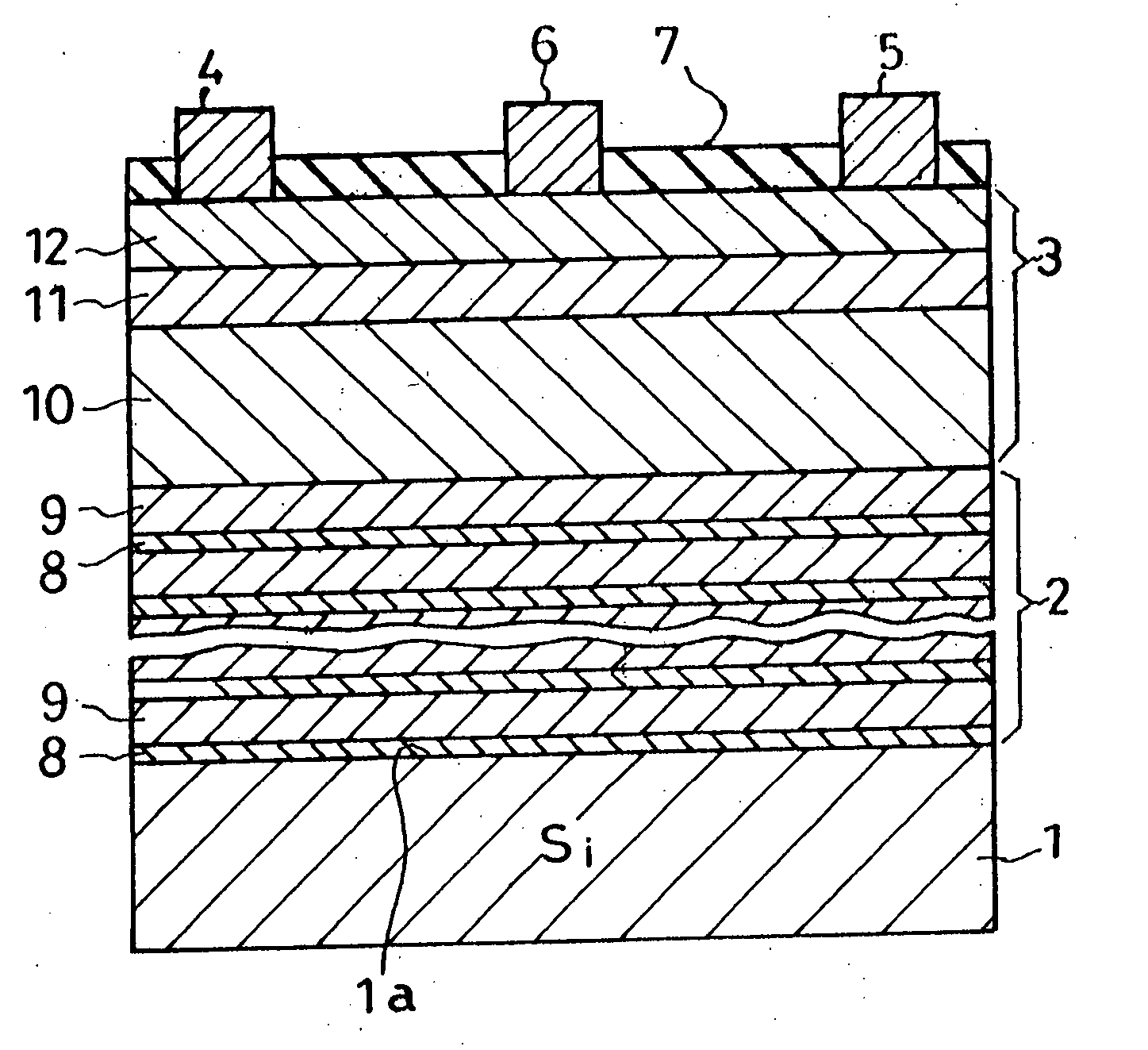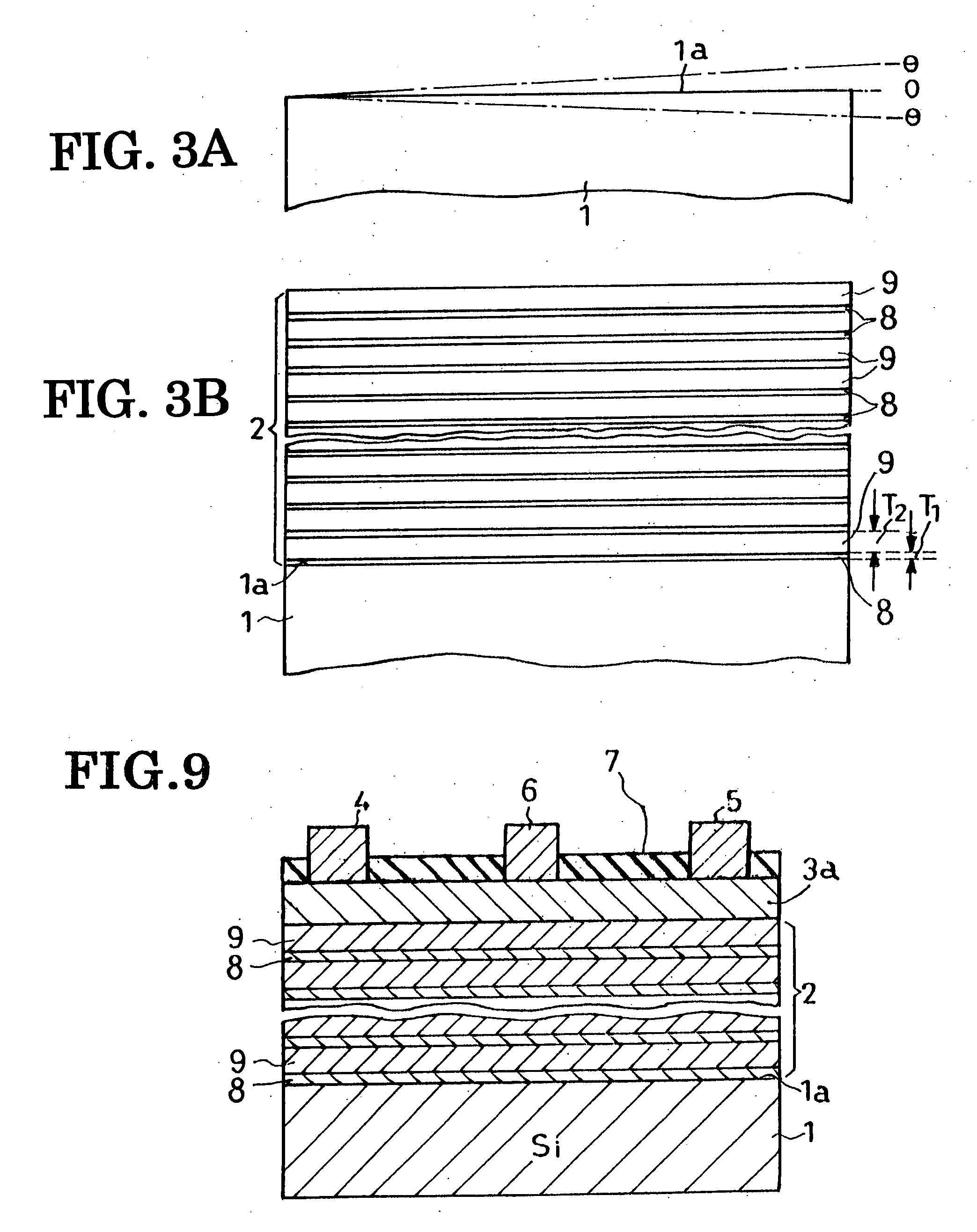Semiconductor device with reduced leakage current, and method of fabrication
- Summary
- Abstract
- Description
- Claims
- Application Information
AI Technical Summary
Benefits of technology
Problems solved by technology
Method used
Image
Examples
embodiment
of FIG. 5
[0074] The multilayered buffer region 2 of the FIG. 1 embodiment is modifiable as indicated in FIG. 5. Generally designated 2a, the modified multilayered buffer region differs from its FIG. 1 counterpart 2 in that a p-type impurity (e.g. magnesium) is introduced into the first buffer layers 8a. The second buffer layers 9 are of p-type like that of FIG. 1, being doped with a p-type impurity. Thus the modified buffer region 2a comprises a required number of alternations of p-type first layers 8a and p-type second layers 9. The compositions of these buffer layers 8a and 9, aside from the p-type impurity, are the same as those of the buffer layers 8 and 9 of the FIG. 1 embodiment. The HEMT incorporating the modified buffer region 2a is identical with that of FIG. 1 in all the other details of construction.
[0075] Although the entire buffer region 2a is of p-type in this alternate embodiment, the pn junction remains between this p-type buffer region and the n-like electron trans...
PUM
 Login to View More
Login to View More Abstract
Description
Claims
Application Information
 Login to View More
Login to View More - R&D
- Intellectual Property
- Life Sciences
- Materials
- Tech Scout
- Unparalleled Data Quality
- Higher Quality Content
- 60% Fewer Hallucinations
Browse by: Latest US Patents, China's latest patents, Technical Efficacy Thesaurus, Application Domain, Technology Topic, Popular Technical Reports.
© 2025 PatSnap. All rights reserved.Legal|Privacy policy|Modern Slavery Act Transparency Statement|Sitemap|About US| Contact US: help@patsnap.com



